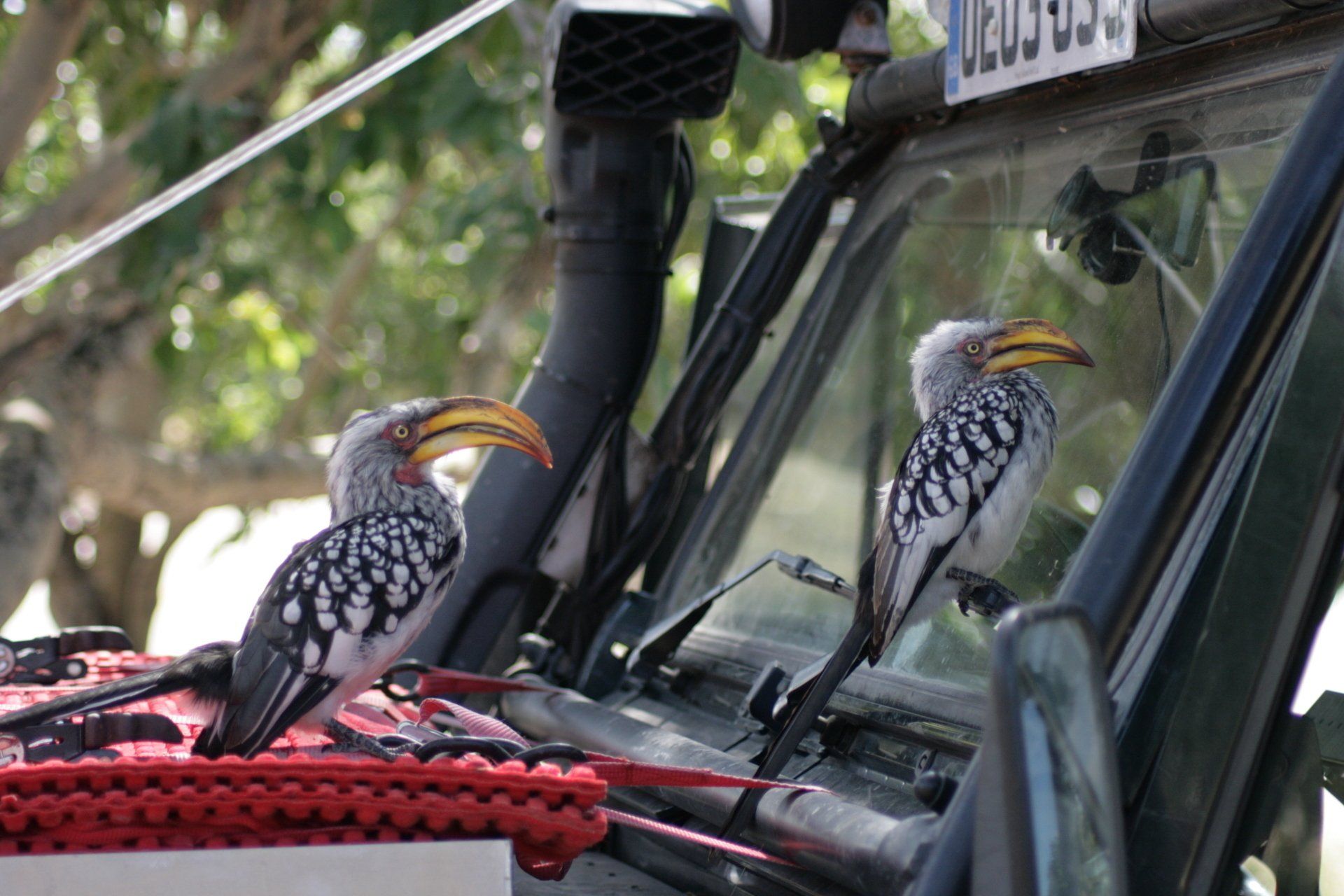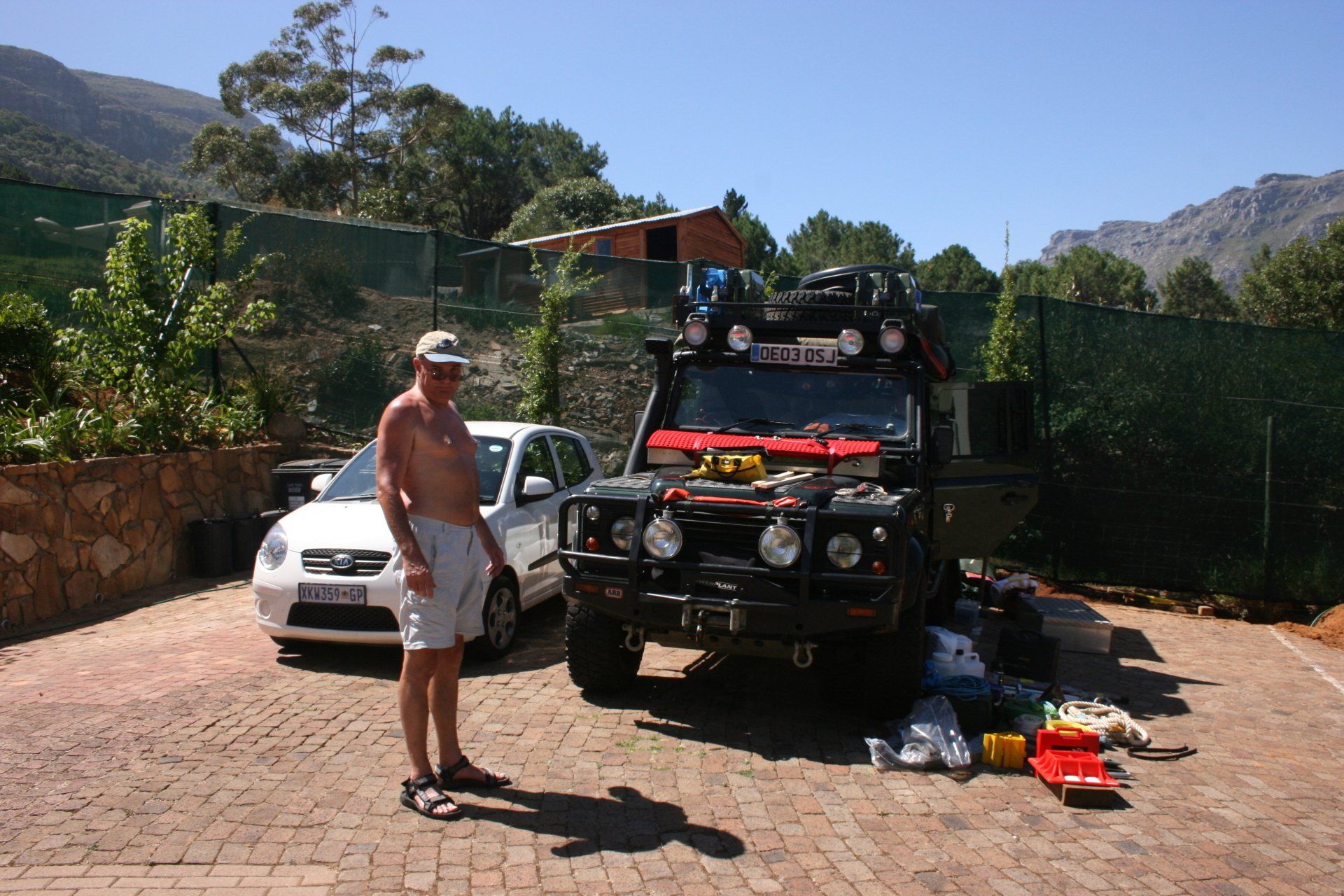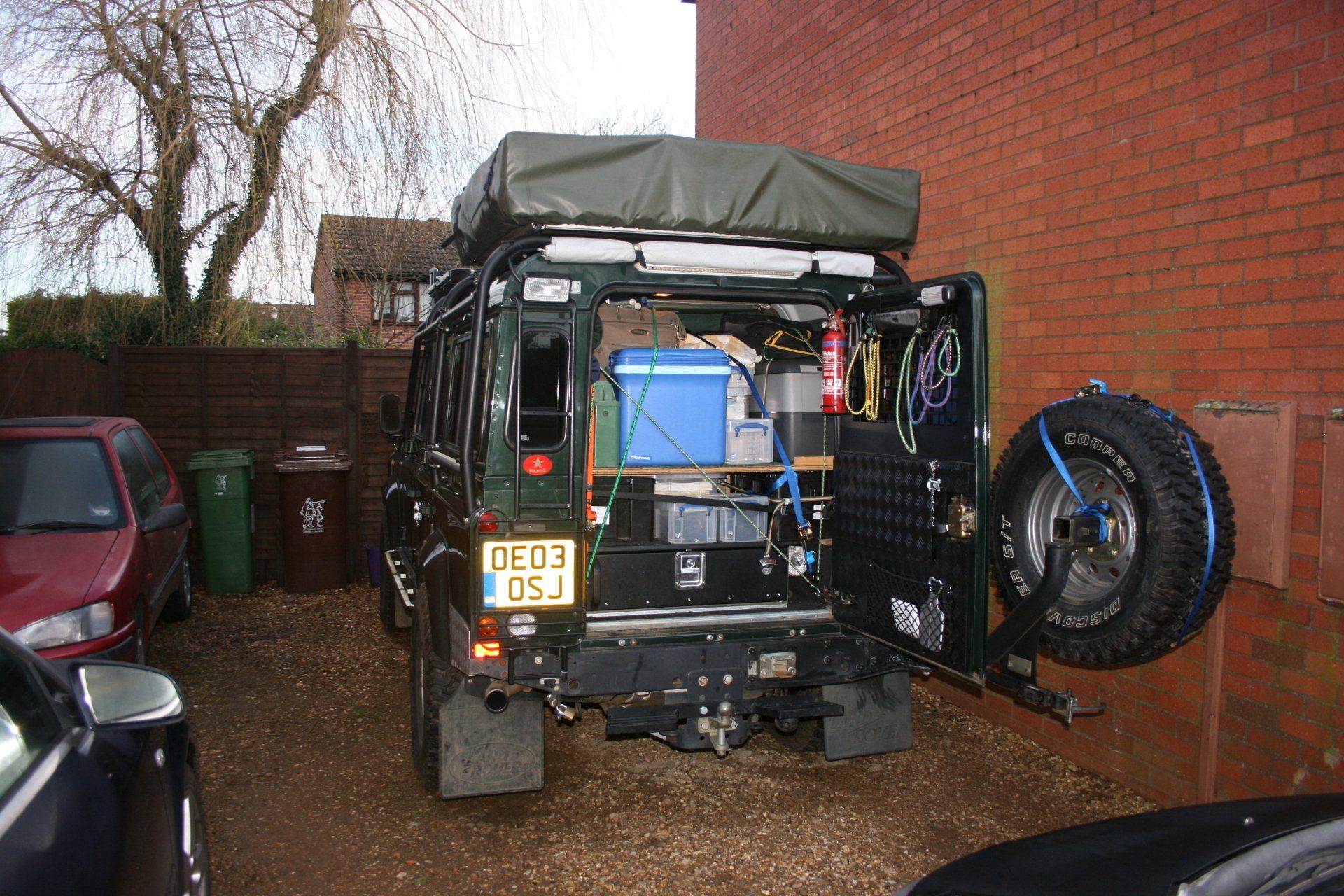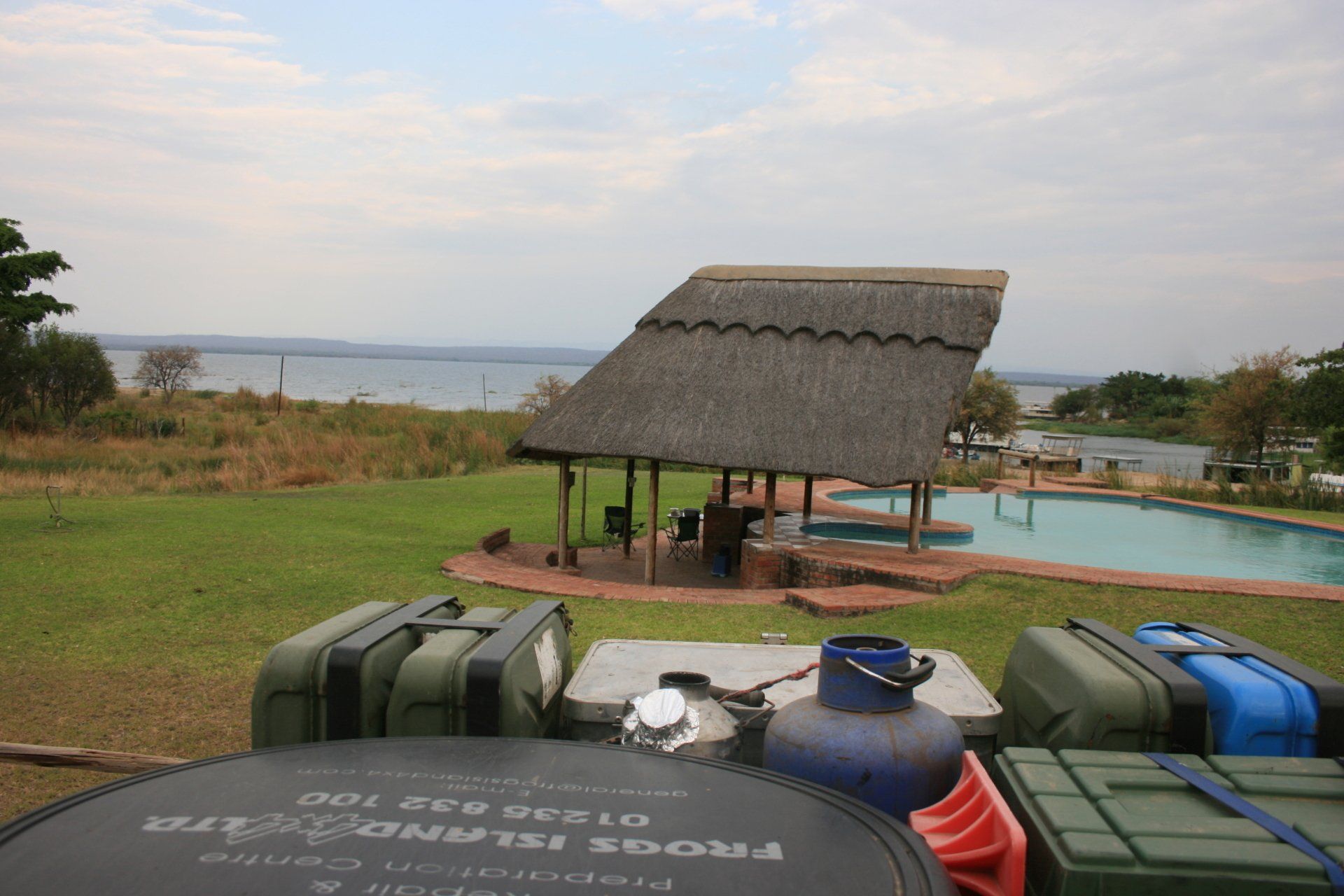Africa4x4
African Adventure - Our Trip
Security; Safety; Storage
Slide title
Write your caption hereButtonSlide title
Write your caption hereButtonSlide title
Write your caption hereButtonSlide title
Write your caption hereButtonSlide title
Write your caption hereButtonSlide title
Write your caption hereButtonSlide title
Write your caption hereButtonSlide title
Write your caption hereButtonSlide title
Write your caption hereButtonSlide title
Write your caption hereButtonSlide title
Write your caption hereButton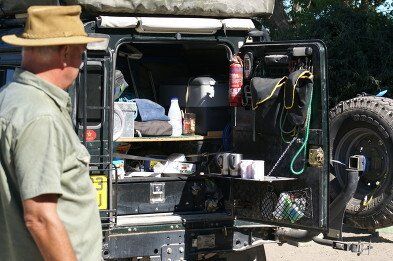
Slide title
Write your caption hereButton
Slide title
Write your caption hereButton
Slide title
Write your caption hereButton
SECURITY; SAFETY; STORAGE
SECURITY
The vehicle needs to be as secure as possible as it will contain for the length of the trip all your worldly possessions. The rear section can be made particularly secure. Once in the vehicle good practice to keep the doors locked and in towns keep the windows closed. Keep valuables out of sight, both when parked up and when driving through slow, crowded streets. In such situations be very much aware of being “clocked” by ne’er-do-wells. Our experience in Lusaka involved two people; one deployed to distract driver and passenger on one side while on the other side the other grabbed the phone.
Car Alarm
The standard car alarm and engine immobiliser was more than adequate and was not modified. With a roof tent it was our habit, on going to bed, to central lock the 5 doors using the key rather than by way of the key fob that would arm the alarm – being pressure and motion sensitive it wouldn’t take too much night time rocking to set it off, shattering the peace and sending one hurriedly down the ladder to investigate and dis-arm as the blacked out windows seriously reduces the fob range.
Having locked up the keys went to bed with us.
Blacked out windows
Fitted to all windows behind the driver and passenger windows (these cannot be tinted beyond the UK legal limit). This has two advantages; firstly, people cannot not look in and see what contents you have, particularly in the rear section. Secondly, it helps keep the rear surprisingly cool in the sun. It does, however, limit photography in the rear when closed.
Rear Window Guards – fitted to the whole of the rear section sliding windows, rear door and two small rear windows. Our strong grilles were fitted on the inside of the windows and would make breaking the glass difficult and even if successful, very difficult to get a hand in. Other types fit on the outside and would serve as a visual display of security and can be used to attach other items. Shortened sand ladders bolted on also make good side window protectors.
Rear Load Space (Dog) Guard
Fitted behind the middle seats to prevent access to the rear from the middle of the vehicle. Also serves as a safety feature to protect occupants from flying boxes etc. It also a useful grille upon which to clip and tie all manner of things.
Additional Security
If we were leaving the vehicle for any length of time we could additionally store valuable items in the lockable rear storage drawer and the spare wheel carrier could also be padlocked. If they could get past all this – good luck to them. The front cubby box was fitted with a shed lock and a steering wheel lock supplemented the standard alarm and immobiliser. The steering wheel lock could also serve as a useful ‘weapon’ if required – it wasn’t!
Padlocks
Loose items stored outside or on the roof were secured by small padlocks whenever possible to dissuade the casual thief. Other items could only be strapped on with ratchets but not quick and simple to remove so again would prevent snatch thefts. To be fair, we never had any items stolen directly off the vehicle.
Decoy Items
We did keep in the front cubby box an old wallet containing a few foreign bank notes and coins along with several expired store cards and similar that looked like credit cards. The idea being that should we be held up at gun or knife point we could hand over the wallet and the robbers would run off triumphantly. That was the theory anyway. Whether it would have worked or not we, fortunately, never found out. Likewise, an old phone would serve the same purpose.
SAFETY
Fire Extinguishers
A legal requirement in many of the countries we visited and they will be checked so make sure you have one readily available and preferably visible. We fitted a 1 kg ABC powder one onto the internal section of the roll cage behind the passenger seat and one in the rear section on the back door. Best to get ones with gauges rather than those with expiry dates.
Warning Triangles
A legal requirement in most southern African countries with some requiring two and should comply with legal requirements such as being made of metal.
Triangle checks are not unheard off!
Audible Warning
Besides a legal requirement a good and loud horn is essential especially when overtaking wandering lorries and vehicles and the like. I fitted additional horns wired into the standard one
STORAGE
Since the vehicle was going to be our home for a year we needed plenty of storage to carry all our possessions, be they everyday items; infrequent items; just-in-case items or emergency items. Packing and re-packing the various boxes became a regular routine for Judi as conditions changed and I gave up trying to find things and just asked her – my saying became; ‘a place for everything and everything in its place, but it changes on a daily basis!’
Frontrunner Rear drawer system
A huge sliding drawer in which we kept much of our cutlery and cooking utensils and a lot of the tins etc. Being a sliding unit it was easy to find stored items. We fitted a handle - a Land Rover Defender internal door handle fits perfectly onto two of the allen screws to assist opening on slopes. Also carried was a length of wood to wedge the drawer open on slopes. I had to repair the locking catch on return to the UK by strengthen the catch attachment points.
Aluminium Storage Boxes
A reasonably small lockable box was bolted onto the roof rack to hold much of the recovery kit such as ropes, straps, strops, shackles, D rings, etc., etc. that could be easily accessed from the bonnet. A much larger aluminium box was bolted in the rear shelving in which was stored larger items and things not needed on a regular basis, as the box was general stacked upon. Bear in mind aluminium makes certain items turn black and wears quite easily - the roof mounted one developed a hole over time.
Wolf Boxes
Hard plastic stackable storage boxes measuring approximately 50 cm by 40 cm externally and either 23 or 28 cm high. Very strong with the exception of the plastic catches – we broke many of the 4 per box ones until we replaced them with what looked like later designed ones (black). Ideal for indoor storage but when used on the roof we duct taped up the air holes to keep out the dust and wet. We took 8 of them, 4 flat and 4 high top along with a couple of canvass inserts but ended up using these canvass bags out of the boxes as our suitcases.
Front Cubby Box
Standard fit between the front seats but with a lock fitted. A handy size and it position meant it was secure from prying hands. I would now modify it to take a security safe/strong box underneath; somehow.
Radio Cubby Box
The central console radio was removed as it would not be used in Africa and replaced with a bespoke small open cubby box to give additional small item storage but stopped putting anything valuable there as it could be reached through an open window. Anti-slip material fitted to this and other console storage areas.
Roof netting
Netting was rigged up in the roof of the rear passenger section into which soft items such as coats, fleeces, blankets etc. could be stuffed but remain readily available. Netting was also strung in the rear but both soon taken down – no good for passengers in the front and impeded stacking in rear.
Rear Shelving
A strong wooden shelf was fitted in the rear to take 4 low wolf boxes underneath, giving plenty of headroom for more wolf boxes above plus various other items including the freezer.
Centre Seats
Knowing we would have visitors joining us during the year, plus a requirement sometimes to carry miscellaneous passenger or passengers, we left the seats in situ; without them storage space could be greatly increased, although we did manage to stack lots on, under and behind them. The rear seating was removed in the first fit-out.
Rear Dog Guard
Much equipment and many items were attached to the front of the guard by stretches or clips making items readily available such as first aid kits, ropes, torches, etc. Besides a security item preventing flying items it allowed easier stacking in the rear.
www.africa4x4.org
